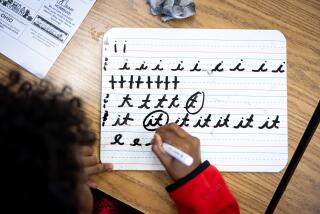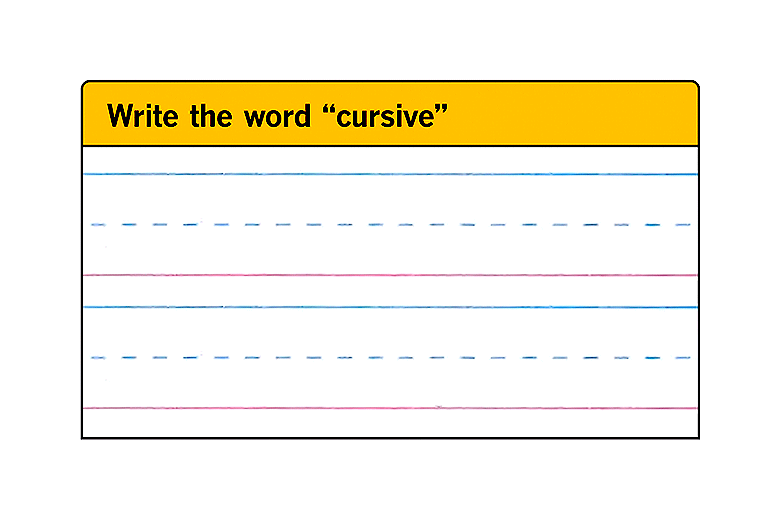READING TIPS AND NOTES / EXPERT ADVICE
- Share via
Children can learn to be better readers through writing. By exploring print, they learn to connect reading with written words. Adults can encourage children by modeling writing through personal notes and by co-authoring a letter or story with a young writer, as well as by offering opportunities for children to write on their own.
Little notes slipped into lunch boxes or left on pillows show the usefulness of reading and the role it can play in everyday life. Besides feeling loved and connected to their parents, children also practice reading. With young children who are just learning to decode print, it is easy to say, “I’m putting a note in your lunch that says ‘I love you.’ ”
Even if they don’t know every word, they are engaging with print and they are learning the power of the written word. Writing can also personalize reading. Sometimes stories about other lives and lands feel distant to children, whereas a letter written together to a grandparent is all about a known world. A parent can write it as the child dictates. Together the two can point to the words and read it aloud.
This is a perfect moment to notice details of print, such as how many words start with the same letter as the child’s name or how many words end in an E sound. Since the message to the grandparents is personal, children are more likely to enjoy interacting with it for a longer period of time. The world of print gives a child much to explore. The first thing very young children do is mimic their parents’ writing. They make squiggly lines in the same direction as their parents do. Then children often make letter-like marks, followed by repetition of a few letters (often ones in their name). Letters may be backward and written in a circle.
Next, children begin to write words, often with just an initial letter. Slowly, they develop their print awareness and move toward conventional spelling. When a 5-year-old brings me a note that I can’t make sense of, I say, “Thank you for writing me a note, will you read it to me?” Parents may ask: Shouldn’t I rewrite the words and ask my child to write it again perfectly? But most often what the child remembers is not how to spell the words, but rather a parent’s rejection.
That is what I remember: When I was in third grade, I wrote my grandfather a letter all by myself. A couple of weeks later, my letter was returned with red circles around the words that were misspelled. I did not learn those words, I only took in his message that my letter wasn’t good enough. It was years before I wrote him again. And even now, I choose short, easily spelled words if I’m not near a spell checker.
Clearly, there are times when every word should be spelled correctly, but that is more often for the reader than for the writer. Children learn to be good readers and spellers by loving language. Discussions about specific letters or word patterns (for example, noticing rhyming words) aid their development more quickly than red circles. Literacy knowledge thrives when children see the relevance in their lives.
BOOK EVENTS
* Monday in Granada Hills: Family storytime with guest storyteller Nancy Schwartz at the Granada Hills Branch Library. 10640 Petit Ave., 4 p.m., (818) 368-5687.
* Thursday in Boyle Heights: Storytime and crafts to celebrate Earth Day. Instruction in how to transplant a plant. Bring your own flowerpot. Malabar Branch Library, 2801 Wabash Ave., 3:30 p.m., (323) 263-1497.
* Friday in West Los Angeles: Signing and talk by Ruby Bridges about “The Story of Ruby Bridges,” by Robert Coles. Children’s Book World, 10580 1/2 West Pico Blvd., 4-5:30 p.m., (310) 559-2665.
* Saturday in Westwood: Los Angeles Times Festival of Books. Dickson Plaza, UCLA, 10 a.m.-6 p.m., (213) 237-BOOK.


